|
IS THERE LIFE ON MARS?
Now MARTI is on Mars can you think of any ways he might search for life? Here are a few suggestions. Select the ones that are most appropriate and see if you are right.
 Look for alien people Look for alien people
 Look for fossils Look for fossils
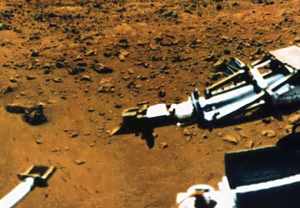 Run some life detection experiments Run some life detection experiments
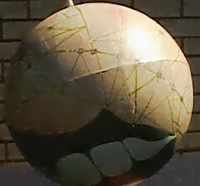 Go to the Martian canals Go to the Martian canals
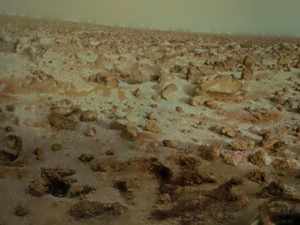 Wait for the Martians to come to us Wait for the Martians to come to us
 Listen for Martian radio Listen for Martian radio
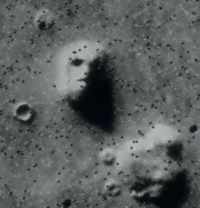 Look for Martian Buildings Look for Martian Buildings
 I need help I need help

 Look for Alien People Look for Alien People
The idea of alien people is just that! An idea. As far as we know there are are no intelligent aliens, anywhere. There are certainly none on Mars. Alien people must remain in the realm of the imagination - at least for the time being.
So lets think about this logically. We need to be sure about what we are trying to find. Remember, we are looking for life. That does not mean we are looking for people. People are intelligent beings that can make things and talk to each other and understand the Universe! We are not looking for such creatures on Mars. We already know that no advanced creatures such as ourselves, or more basic animals like insects, or even things like plants live there. However, it is possible that very simple living things do live there - things such as bacteria or tiny fungus.
Try again. This is not a recommended method that should be used to look for alien life.
Return

 Look for Fossils Look for Fossils
Fossils are relatively common on Earth and they reveal that life existed here for about four billion years. Fossils are durable and easy to recognise.
Mars doesn't appear too promising for the existence of life being present now, but perhaps conditions were right in the past. Maybe all Martian life is now extinct. Even finding evidence of extinct life would be a major revelation for science. So searching for Martian fossils is a priority.
It is unlikely however that they will look anything like these (above), which are about full-size on the screen. The search will concentrate on looking for tiny fossils that are like Earth bacteria - micro-fossils (below). This particular one was found in Australia. The full story is on the University of California, Berkeley website.
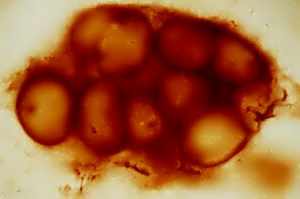
© Image: University of California, Berkeley
Return

 Run some life detection experiments Run some life detection experiments
This seems a logical approach, but how can we do it? How do we know if something is alive?
Well, what do living things do that are obvious to us? They breathe, they eat, they reproduce, some move by themselves, they make waste products, and they grow. But a lot of other, non-living things make very similar actions that appear to be evidence of life. Indeed Viking 1 had this very problem, though the experiment could detect if living organisms were present, the experiments could also detect other chemical reactions that looked the same, but were not from living cells. For an account go to NASA.
© Image: NASA
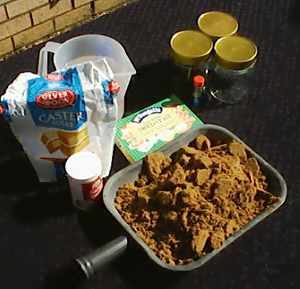 Make you own Mars life Make you own Mars life
detection laboratory
You may like to try the following activity: This is about trying to find if there is life in simulated Martian soil.
Take 3 jars, and fill one with dry sand, one with dry sand and baking powder, and one with dry sand and yeast. If you have a freezer, leave the three jars in it overnight, to get them really cold. In the morning, make a strong solution of warm water and sugar, and add the same amount to each of the three jars. DO NOT replace the lids and wait for an hour to see what happens.
How do you know which jar has living things in it?
Return

 Go to the Martian canals Go to the Martian canals
The Martian canals were seen by many observers in the nineteenth century. They were popularised by Schiaparelli and Lowell, who drew intricate diagrams of them. Schiaparelli called them "Canali" which simply means channel, which could be a natural phenomenon. But the American press picked up the story, and in blind ignorance canali became canal, a man-made structure. This reinforced the idea that Mars had intelligent beings on it, so the myth of the Martian was born.
By the early twentieth century, telescope optics had improved so much that it was obvious that the canals were just an optical illusion. There are no canals.
Ironically for the Victorian astronomers, spectacular channels do exist on Mars, but these only became obvious when the Mariner 9 Spacecraft arrived. But they are natural and nothing to do with living beings.
Return

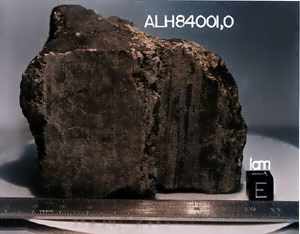 Wait for the Martians to come to us Wait for the Martians to come to us
Some researchers are doing just this. It is not as stupid as it first seems, if we accept that Martians may be bacteria-like.
Mars has been struck many times by enormous meteorites, and it is obvious that some of these colossal impacts have sprayed Martian rocks and debris into space. This material has drifted through space and some has been attacted by the Earth's gravitational field. Eventually such rocks fall to Earth as meteorites themselves.
© Image: NASA
Several Martian meteorites are known to exist, and three in particular appear to have micro-structures in them that could be Martian bacteria.
But at present no-one is completely sure. Different teams of scientists around the world are arguing over the validity of the claims, and no conclusions can be reached yet.
The three meteorites are ALH84001 (found in the Alan Hills in Antarctica and shown above and below), Shergotty and Nakhla.
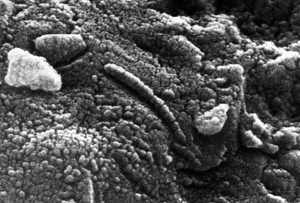
Micro fossil bacteria or not in ALH840001? © Image: NASA
University of Boulder, Colorado
NASA
Return

 Listen for Martian radio Listen for Martian radio
There are no radio broadcasts on Mars, at least from Martians. The only ones that originate there are from Earth made equipment that we have sent to Mars.
However, searchers for intelligent life beyond the Solar System are using this technique to see if they can detect the radio transmissions of alien civilisations. The programme is called SETI.
Return

 Look for Martian Buildings Look for Martian Buildings
Soon after the first close-up images of Mars were sent back from the Viking Orbiters it was noticed that there appeared to be a giant face sculpture a couple of miles long, on the surface of Mars. Further detailed examination of images of the same locality then revealed five-sided pyramids, rectangular piazzas and enormous buildings laid out in geometric patterns, according to some people.
Most astronomers, planetary scientists and the world's space agencies dismissed these ideas completely, as extremely unlikely. The truth was finally unveiled in April 1998 when the Mars Global Surveyor photographed the area of the Face in great detail and revealed what...? Martian civilisation or just rocks? What do you think?
© Image: NASA
The illustrated story is at Optical illusions 2.
Return

Return to Rover
|













